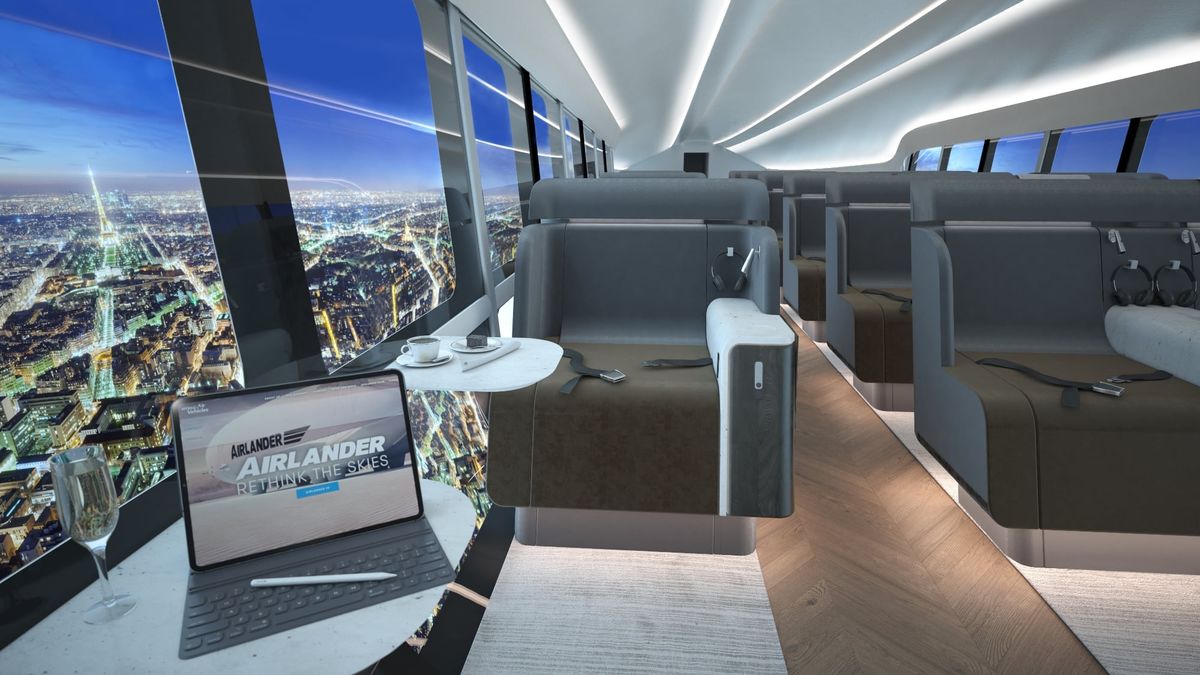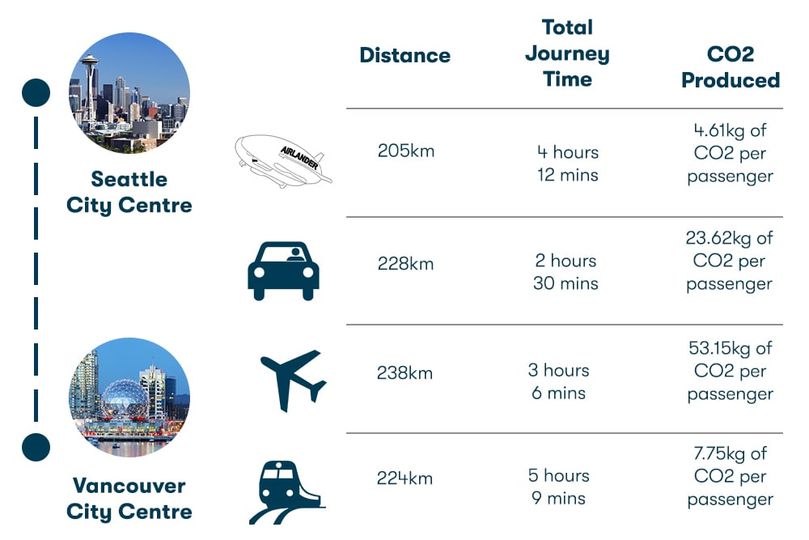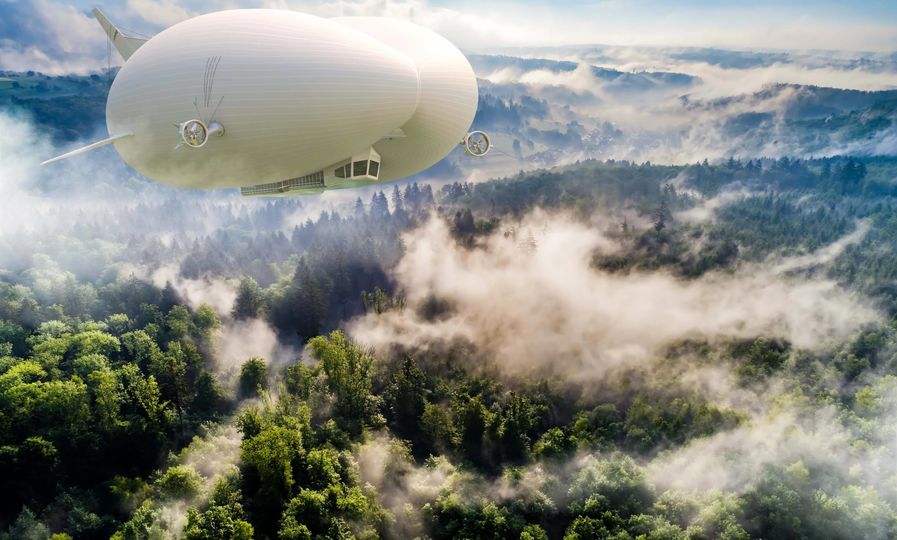21st century blimp offers a luxurious new take on intercity travel
This airship is suited to everything from short intercity and regional routes to scenic flights and luxury expeditions.

When it comes to flying between cities and even on some regional routes, would you swap high speed for slow comfort?
That’s a trade-off which British company Hybrid Air Vehicles believes many travellers would be more than willing to make, especially if it means relaxing in spacious armchairs while enjoying the view through panoramic windows.
That’s the lure of the Airlander 10, a hybrid electric blimp which HAV expects to launch in 2025.
While jets scythe through the skies at around 800km/h, the Airlander 10 lumbers along at a leisurely 100km/h.
The spacious cabin nestles beneath a massive helium-filled hull which lifts the Airlander 10 off the ground – or the water, for that matter, as HAV says its 21st century blimp can take off from (and land on) any flat open surface of at least 600m diameter: including stretches of fields, sand and even water.
Once aloft, the airship relies on four propellers on each corner to push it along.
The first iteration of the Airlander will see only two of those propellers driven by electric motors powered by liquid hydrogen fuel cells (which offer a superior weight-to-energy ratio to batteries) with the other pair powered by kerosene-burning engines, although by 2030 the company expects to the Airlander will be fully electric.
Slow travel
Even as a hybrid airship, the Airlander’s CO2 footprint is around 10% that of a conventional jet for added environmental appeal to the ‘slow travel’ set.
“The number-one benefit is reducing your carbon footprint on a journey by a factor of 10,” explains Mike Durham, Hybrid Air Vehicles’ chief technical officer.
“But also, while you're going to be in the air a little bit longer than you would if you were on an airplane, the quality of the journey will be so much better.”

It’s also quieter: with the enormous helium-filled hull separating the engines from the cabin, there’s little vibration and almost no noise in the cabin of these eco-friendly blimps, except perhaps for the clinking of cocktail glasses.
Working with British consultancy Design Q, HAV envisioned the cabin in a number of configurations.
There’s a 90-seat version which could just as easily feature in an all-business class jet, albeit with much more space: the Airlander 10’s cabin is wider than single-aisle aircraft such as the Airbus A320 or Boeing 787.
This includes several rows of rear-facing seats for a more social, lounge-like experience.
A luxed-up 72 seat iteration sees all seats angled towards the window, with ottoman footstools and plenty of free space in which to move around.
“For many decades flying from A to B has meant sitting in a metal tube with tiny windows – a necessity, but not always a pleasure,” says George Land, commercial business development director at HAV.
“On Airlander, the whole experience is pleasant, even enjoyable.”
Design Q went a step further, imagining the 49m long cabin in “luxury expedition mode” where up to 18 passengers can be spoiled on three-day excursions.
This allows for private ensuite bedrooms…
… an observation lounge with a viewing window fitted into the bottom of the cabin….
… a lounge-like environment akin to what you might find on a yacht or private jet…
… and of course, a cocktail and canapé bar.
“Airlander challenges people to rethink the skies,” explains Hybrid Air Vehicles’ executive Stephen McGlennan.
“Air travel has become very much about getting from A to B as quickly as possible. What we’re offering is a way of making the journey a joy.”
HAV sees the Airlander 10 as best suited for short-haul city-hopping and regional routes along with sight-seeing jaunts and luxury expeditions.
The firm has already inked a deal with Swedish travel company OceanSky Cruises, which plans to use an Airlander for trips over the North Pole, and is in ongoing discussions with a number of airlines.

















